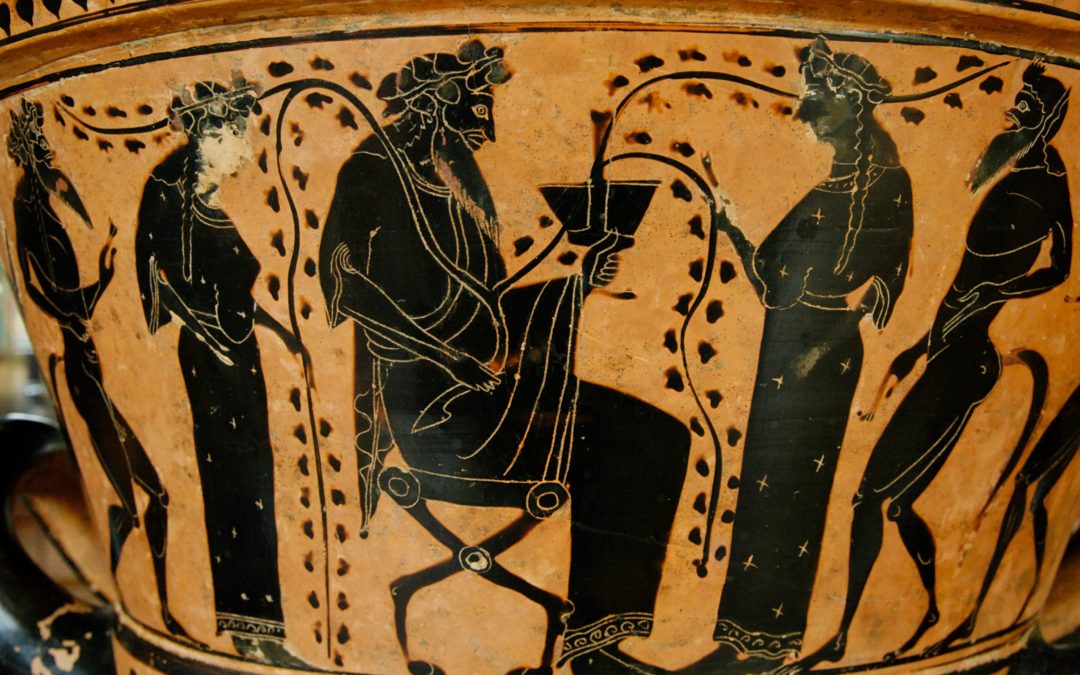
by Moe | Jan 12, 2020 | Gods & Goddesses, Latest Media
In ancient Crete and Greece, the God Dionysus was the main deity whose tragic story and rituals reflect the awesome drama we know as birth, life, human duality, death, decay, and the great restoration of all beings.
This tragedy in which the human with his lower animal instincts form the Black Dionysus who was considered a Son of God and also the God of this World with his various epitaphs showing that he was also a God of nature, vegetation, the tree, vines, and decaying grapes in the form of wine where he became the drunk God.
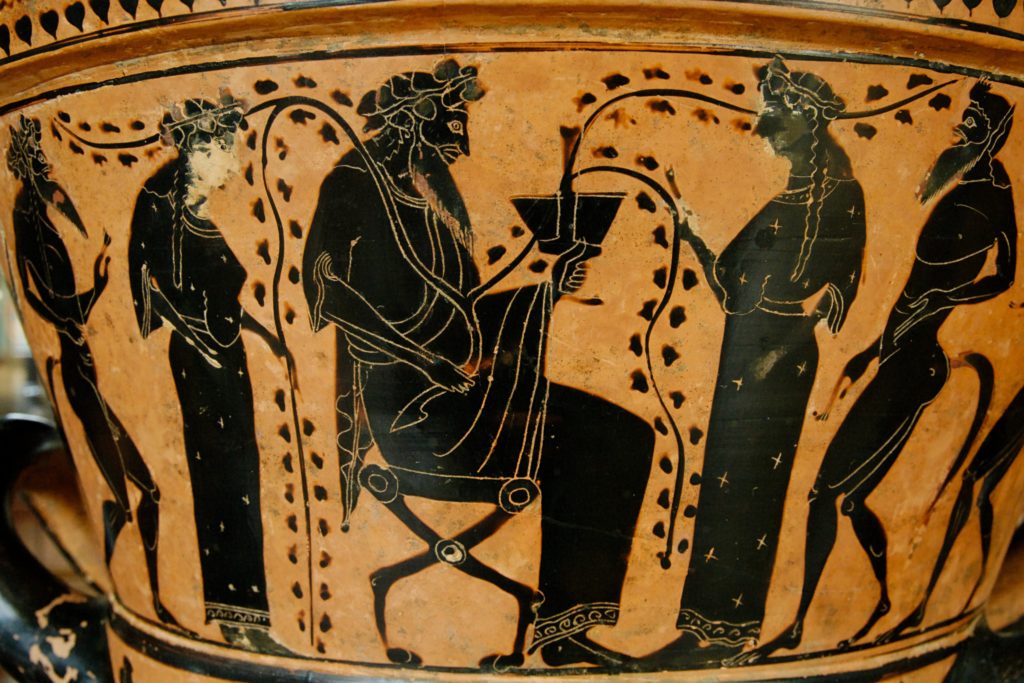
Rather than rehash what has been written about Dionysus many times before, I would like to focus on some new revelations dealing with the idea of a living, decaying, dying and reborn god with his various epitaphs reflect the true nature of humans and the dual aspects of our reality which become evident once we come to know the true history and our own inner Black Dionysus on an intimate basis, we can balance him with the science of the light of Apollo.
DIONYSUS DENDRITES – THE TREE GOD
The first depictions in ancient artwork and literature his early developments as a tree God before he became associated with grapevines and wine when almost all the ancient Greeks of this time had sacrificed to “Dionysus of the tree” and was strongly associated with the pine-tree. In Thebes, the Capital of Boeotia, and the Phoenicians, one of his titles was “Dionysus in the tree” and a legend of Potniae tells that the people of the town, having offended Dionysus, were suffering from an evil pestilence.
The government of Delphi had commanded the Corinthians to worship a specific pine-tree “equally with the god,” so they made two images of Dionysus out of it, with red faces and gilt bodies. (1)
As a tree God, Dionysus was the patron of cultivated trees and harvests in which prayers were offered to him and his images set in orchards so that he would make the trees grow and they would have a bountiful harvest and he is then referred to as “well fruited,” “he of the green fruit,” and “making the fruit to grow.” One of his titles was “teeming ”or “bursting ”(as of sap or blossoms).
In ancient Athens, the Athenians were said to sacrifice to him in order to ensure a full harvest of all the fruits of the land.
The earliest images of the God show him made of wood with the branches still attached in parts, and in this version, he was called Dionysus Dendrites, the protector of trees. His image was often merely an upright post, without arms, but draped in a mantle, with a bearded mask to represent the head, and with leafy boughs projecting from the head or body to show the nature of the deity. In art, a wand, tipped with a pine-cone, is commonly carried by the god or his worshippers.
In this image, it appears as if fungal spores are shooting from his body.
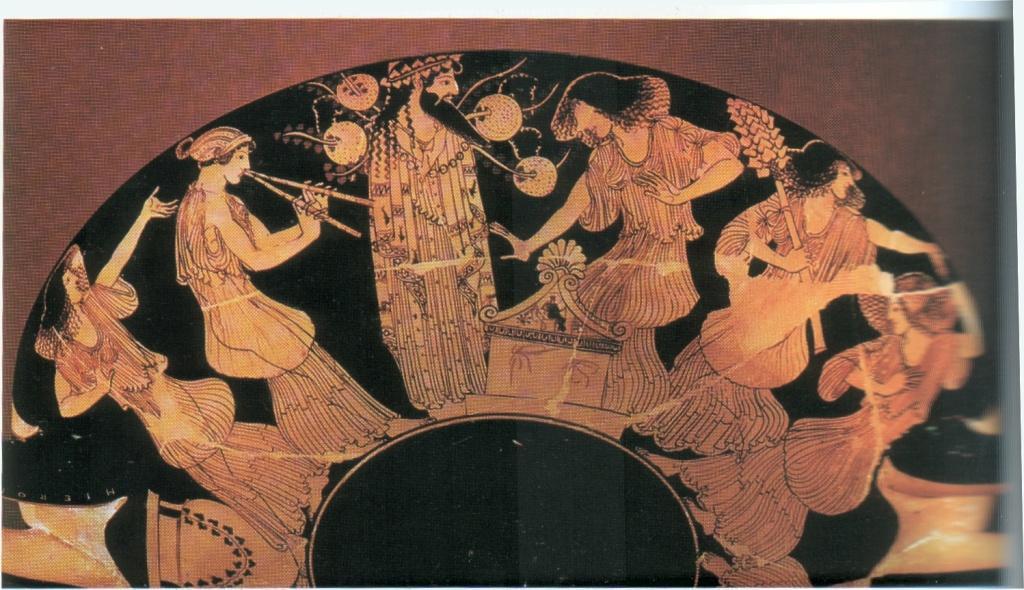
THE SCIENCE OF DENDRITES
I find it fascinating that in the earliest times he is called Dionysus Dendrites given the fact that today in 2020, when you research this word “Dendrites,” you find it means “a crystal or crystalline mass with a branching tree-like structure,” and “a short branched extension of a nerve cell, along which impulses received from other cells at synapses are transmitted to the cell body.”
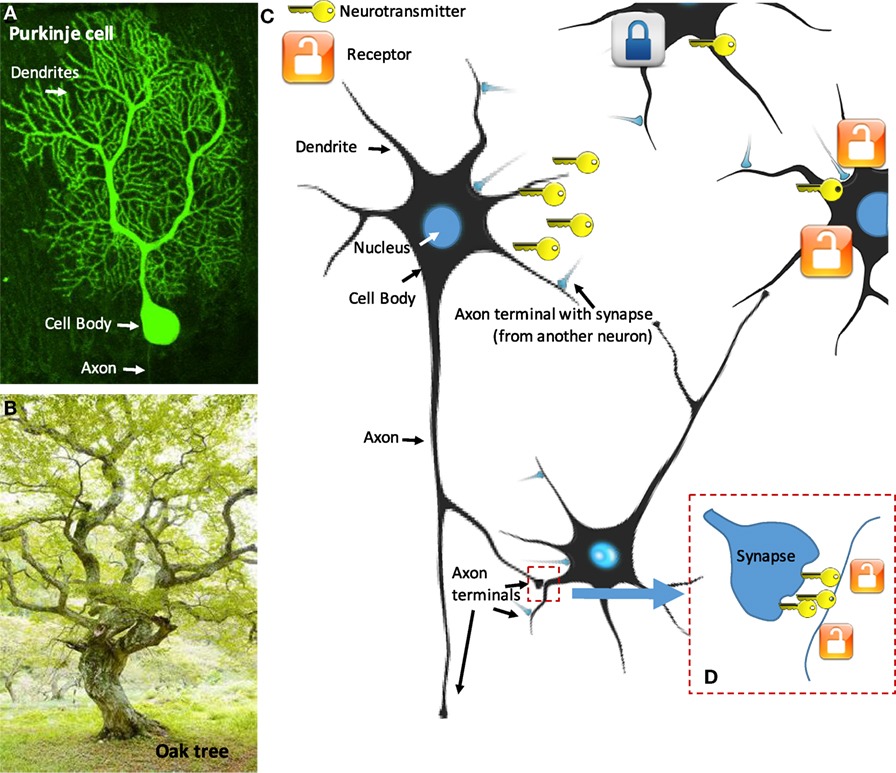
With the history of Dionysus as a protector of trees and harvest being “Dionysus of the tree”, this ancient myth is actually connected to modern science given the fact that today a dendrite means “a structure of nerve cells that comprise the human brain.” The word was coined by scientists who first studied the structure of the brain, they noted its strong resemblance to trees so they named it after the Greek Dendron, meaning “tree.”
Believe it or not, these Dendrites appear to be natures, animals, mammals, and humans’ super internet signaling pathway that we all share. A type of biological internet for communication and a whole host of other mechanisms such as parasitism and natural selection.
For example, a Dendrologists is a scientist who studies wooded plants who at one time theorized that trees that lived together were cooperating with each other by sending resources through their roots and sharing nutrients, forming a complex system sometimes referred to as the “wood wide web.”

However, they are now finding that the trees actually communicate through a complex network of fungi that connect trees forming a symbiotic relationship. The uncanny resemblance between the human dendrites which like filamentous structures within the brain and the fungi in the air and within the soil (mycelium) is in my opinion, more than accidental.
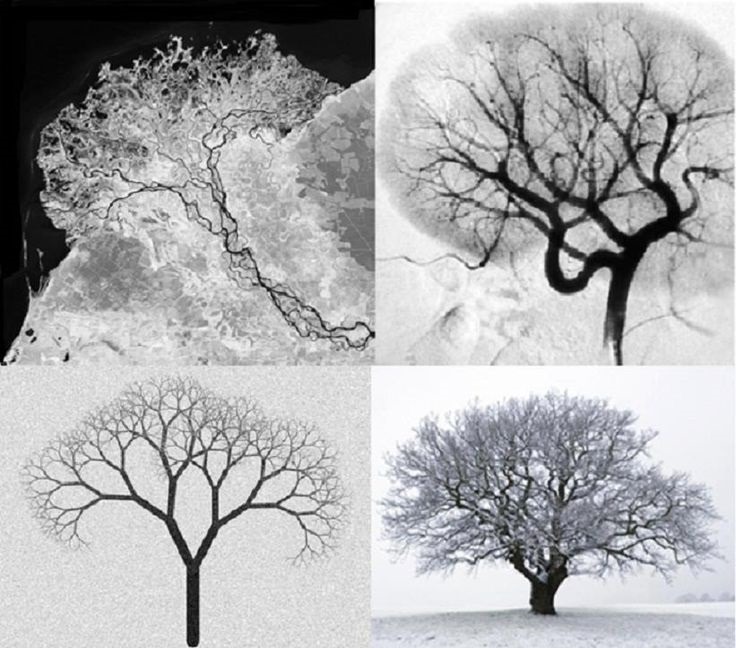
The University of Harvard says, “Fungi can cover a large surface area by developing white fungal threads known as mycelium. Mycelium spreads out on top of tree roots by up-taking sugars from the tree and by providing vital minerals back to the tree, such as nitrogen and phosphorus (Figure 2). This symbiotic relationship between tree roots and fungi is known as the mycorrhizal network (from Greek, Myco, “fungi” and Rhiza, “root”).
Scientists believe all trees have a mycorrhizal network, but “trees only communicate with each other if the fungal and bacterial species that constitute their mycorrhizal networks are the same.” (2)

Now ponder on that fact next time you wonder why you like certain people and not others or are attracted to someones writing and repelled by others. Perhaps, like a tree, our ability to understand the communication about cooperation and the future philosophy will be determined by the very fungi we carry in our bodies. This theory goes along with my article, “The mycelium network of fungal infected Geniuses who built our world.”
This question led me to more research showing that various human dendritic cells (DCs) function as recognition molecules that act as a link between innate and adaptive immunity in order to recognize of pathogens. These dendritic cells then gather the necessary knowledge of the pathogen to employ the appropriate immune weapons via the Toll-like receptors (TLRs) to respond to the threat from different groups of microbes. (3)
As Paul Stamets had written in Mycelium Running: How Mushrooms Can Help Save the World;
“I believe that mycelium is the neurological network of nature. Interlacing mosaics of mycelium infuse habitats with information-sharing membranes. These membranes are aware, react to change, and collectively have the long-term health of the host environment in mind. The mycelium stays in constant molecular communication with its environment, devising diverse enzymatic and chemical responses to complex challenges.”
“I see the mycelium as the Earth’s natural Internet, a consciousness with which we might be able to communicate. Through cross-species interfacing, we may one-day exchange information with these sentient cellular networks. Because these externalized neurological nets sense any impression upon them, from footsteps to falling tree branches, they could relay enormous amounts of data regarding the movements of all organisms through the landscape.”
VINE AND WINE GOD
Homer who had written about Dionysus never mentioned him in association with wine, nor does he appear in Olympus. It is said that Hesiod was the first who calls wine the gift of Dionysus and later is described as the god who teaches man the preparation of wine, whence he is called the “drunken god” (uatváuevos), and the sober king Lycurgus will not, for this reason, tolerate him in his kingdom. (Hom. Il. vi. 132, &c., Od. xviii. 406, comp. xi. 325.)
From this point on, the ancient mythos surrounding the origins of Dionysis had morphed to that he had a double birth of fire and water and strongly associated with the juice of decaying grapes that we know of as wine As the sun dries the earth clay/mud and ripens the grapes of the vine, in a like manner, water and the morning dew moistens the same soil and the microorganisms drink to give birth to the “black vine.”
As the black vine, Dionysus is the first representative/symbol of the individual vine or as I conjecture in modern terms, we can possibly say that what they may have meant in the esoteric sense is that he was the first idea of the species of fungi (black vine) to become alive and conscious molding into another thousand vines. (4)
This may be why Pausanias writes in his, Description of Greece, “Dionysos is lying down in a cave, a bearded figure holding a golden cup, and clad in a tunic reaching to the feet. Around him are vines, apple-trees and pomegranate-trees.”
HADES: THE CHAINS OF DARKNESS IN TARTARUS
Dionysus is also associated with Hades or hell and caves were considered as a gate to the underworld as the abode where the gods like Zeus and his son, Dionysus had presided over human affairs. In another myth, in observing the decay of vegetation in winter, Dionysus was supposed to be slain and to join the deities of the underworld.
But in a sick twist of fate, the divine child was secretly saved and watched over by the Cretan priesthood – the Curetes; but the jealous Hera discovered where be was, and sent Titans to the spot, who, finding him at play, tore him to pieces, and cooked and ate his limbs, while Hera gave his heart
to Zeus.
Caves, tombs, and subterranean chambers have played the central place of initiation for candidates in various secret societies for many thousands of years such as we find with the Dionysian and Eleusinian mysteries. Caves and dark chambers have a long association with the womb of the earth mother and the secret rites of birth, death, hell, midwifery, and with the annual birth of the divine child.
It was said that Dionysus came to Eleusis and took his place there by the side of Hades,” so that Heraclitus in one of his dark words declares this identification to be a proof that life and death are one.” (5)
These Great Caves of Initiation became known in the secret mysteries as “The gates of hell” which were at various holy caves around the world that have a legendary reputation for being entrances to the underworld such as found at Mount Ida on Crete in the cave of Zeus.
When we look to Scripture, the Greek words for “chains” and for “caves” are almost exactly alike and we find that in 2 Peter 3/4:
“In their greed, these false teachers will exploit you with deceptive words. The longstanding verdict against them remains in force, and their destruction does not sleep. For if God did not spare the angels when they sinned, but cast them into hell, delivering them in chains to be held in gloomy darkness until their judgment.”
I find it interesting that the “sinning angels” having been “cast to chains of darkness” delivering them “in chains to be held in gloomy darkness.”
When I see “chains of darkness,” it takes me back to Dionysius Dendrites and the fungal science I spoke of above for the sinners should go with “delivered” or with “having cast into Tartarus or cast down into hell” “reserved unto judgment,” is a place of preliminary detention with the evil spirits (fungi/molds) who tempt and harass us on earth.
Man is subject to these spirits when he is stuck in a dream state bound by his lower nature in which the evil spirits have dominion over his soul. He is asleep in Hades tormented be his shadow and evil demons who hold him in chains.
Plotinus writes of the dark mire and what is meant by the falling asleep in Hades;
“When the soul has descended into generation (from its first divine condition) she partakes of evil, and is carried a great way into a state the opposite of her first purity and integrity, to be entirely merged in which, is nothing more than to fall into dark mire.”
He continues, “The soul, therefore, dies as much as it is possible for the soul to die: and the death to her is while baptized or immersed in the present body, to descend into matter, and be wholly subjected by it; and after departing thence to lie there till it shall arise and turn its face away from the abhorrent filth. This is what is meant by the falling asleep in Hades, of those who have come there.” (Ennead I., book viii)
The Athenian philosopher, Simplicius, writing 2,500 years ago calls matter the dregs or sediment of the first life; matter being, as it were, a certain mire or mud. (7)
Of this mud, it is written in Discordia demens of Virgil; an exact translation of the Νεικεϊ μαινομενῳ of Empedocles;
Hinc via, Tartarei quæ fert Acherontis ad undas;
Turbidus hic cæno vastaque voragine gurges
Æstuat, atque omnem Cocyto eructat arenam.*
“Here is the way which leads to the surging billows of Hell [Acheron]; here an abyss turbid boils up with loathsome mud and vast whirlpools; and vomits all its quicksand into Cocytus.”
The path to conquering the self or shadow constituted the teachings of the Lesser Mysteries to signify the condition of the initiate’s unpurified soul in its earthly body controlled by the spirits of matter until purified by philosophy in body, mind and the Holy Spirit, suffers death.
He is in the dark fungal chains in Hades.
His only hope for salvation is an initiation into the Higher Mysteries of Nous.
As Proclus writes in Theology of Plato, book iv;
“The perfective rite [τελετη, telete],” says he, “precedes in order the initiation [μυησις, muesis], and initiation, the final apocalypse, epopteia.”
Προηγειται γαρ, ἡ μεν τελετη της μυσεως, αυτη δε της εποπτειας. (8)
In which Virgil leads us to the Elysian fields:
Devenere locus lætos, et amæna vireta
Fortunatorum nemorum, sedesque beatas.
Largior hic campos æther et lumine vestit
Purpureo; solemque suum, sua sidera norunt.*
“They came to the blissful regions, and delightful green retreats, and happy abodes in the fortunate groves.
A freer and purer sky here clothes the fields with a purple light; they recognize their own sun, their own stars.”
SOURCES:
1. The Golden Bough: A Study in Magic and Religion By James George Frazer, Sir James George Frazer – 1922
2. Exploring The Underground Network of Trees – The Nervous System of the Forest by Valentina Lagomarsino figures by Hannah Zucker
3. Dendritic cells and fungi – 2003 Study
4. Encyclopaedia of Religion and Ethics, Volume 4 edited by James Hastings, John Alexander Selbie, Louis Herbert Gray
5. Studies of the Gods in Greece at Certain Sanctuaries Recently Excavated By Louis Dyer
6.
7. Physics of Aristotle
8. Theology of Plato, book iv. p. 220.
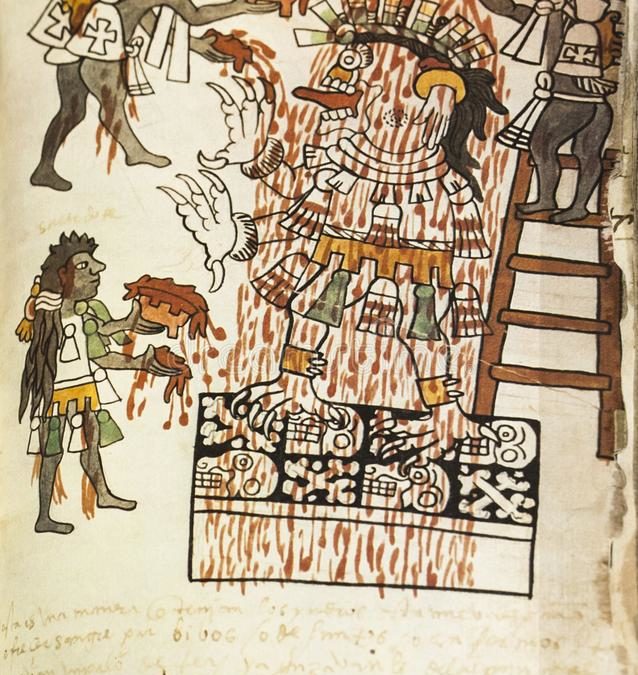
by Moe | Jan 5, 2020 | Demons, Gods & Goddesses, Latest Media, Toxic Mold
Upon discovering the Aztecs (Mexica) in 1519, Hernán Cortés and his army of hardened 553 Spanish conquistadors were both amazed at the beauty and cleanliness of the city. (1) But their amazement soon turned to horror when they witnessed the sight of filthy priests with blood soiled clothes and long twisting hair performing their daily rites which included human sacrifice.
These “Pagans” were said to have blood matted hair that stank of decaying flesh, yet Cortés viewed them as priests and moved on. (2)
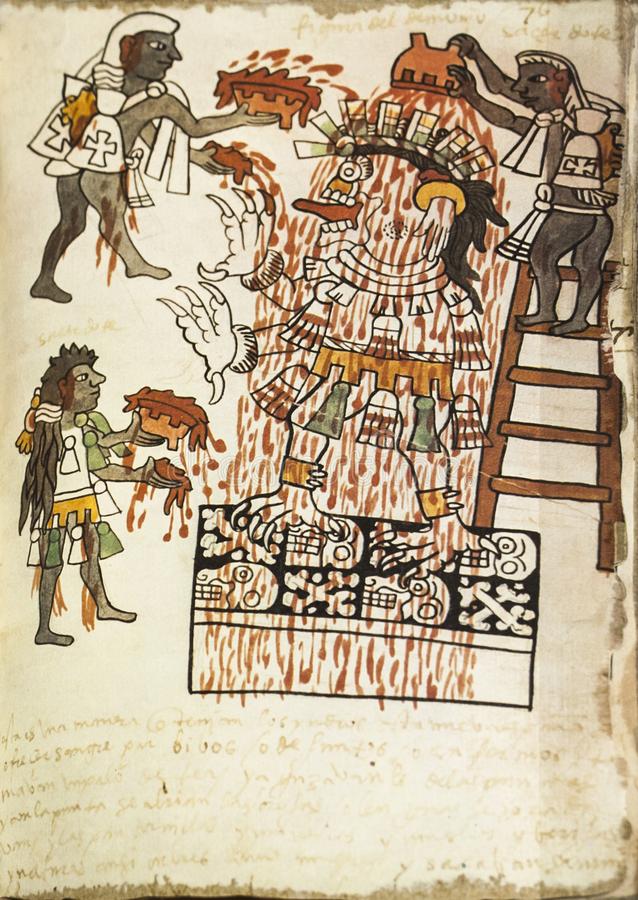
This was what I call the organic scientific duality of magic in which I contend the Aztecs used the demonic fungi of the filaments of the underworld for secret intelligence and dark powers to parasitically conquer their foes and symbiotically govern their people into a Mesoamerican communist superpower ruled by the Deep State. (more…)
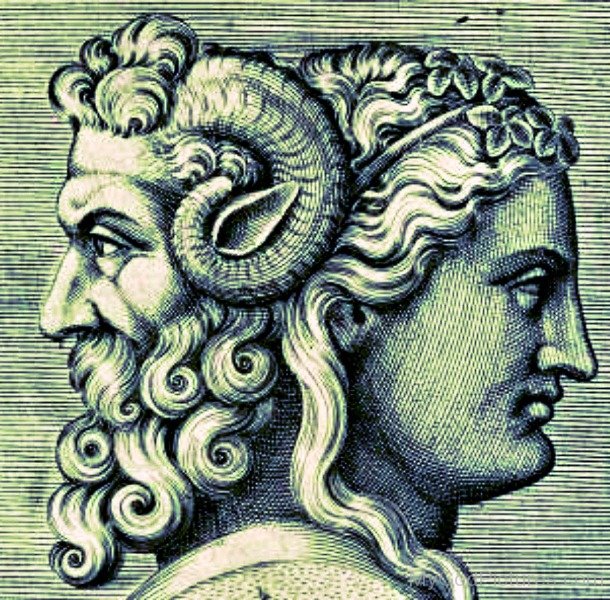
by Moe | Jan 1, 2020 | Meaning of Symbols
“Let your sorrows cease, sacred host of initiated adepts, your God is resuscitated; and his sufferings and pains will  serve to save you.”
serve to save you.”
The name of the month of January is derived from the two-faced Roman god with the Latin name of Janus. The ancient Romans had adopted him as their god of time, doorways, new beginnings, coinage, war, and peace. The reason he has two faces is that one face looks back into the past, and the other face forward to the future.
This is essentially what happens on New Year’s Eve when you countdown to midnight which is the ending of one year, and the beginning of a brand new year filled with new hopes and dreams. A time to put an end to the past year which is now old, and began fresh with a new year. (more…)
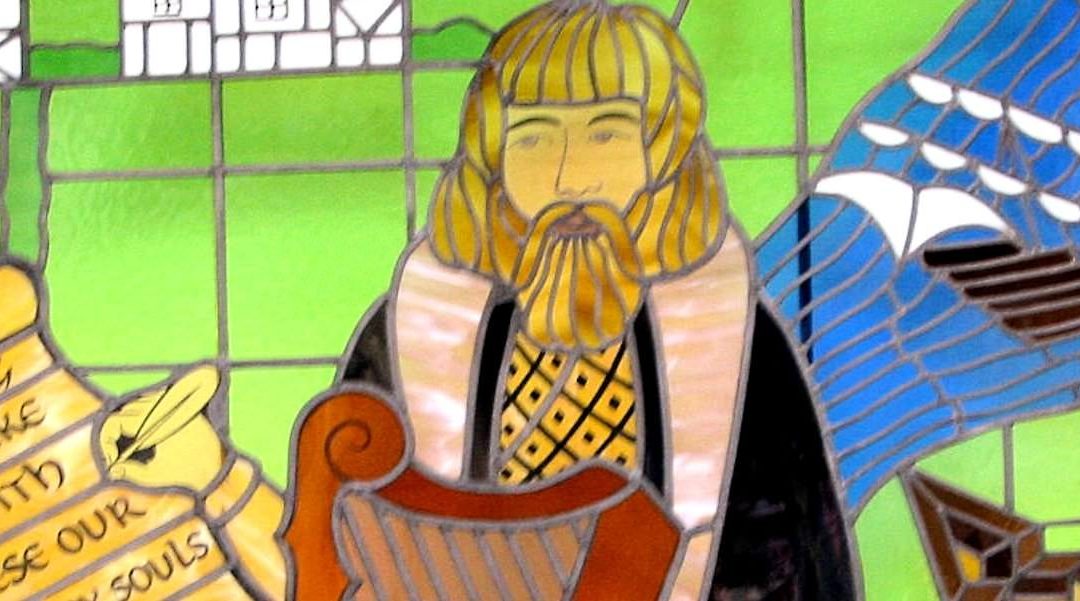
by Moe | Oct 7, 2019 | History of the Brotherhood, Irish History, Latest Media
“The native rulers fled abroad in the episode known as the Flight of the Earls but, as with all the major Irish kingships, the line of descent continues into the present day.”
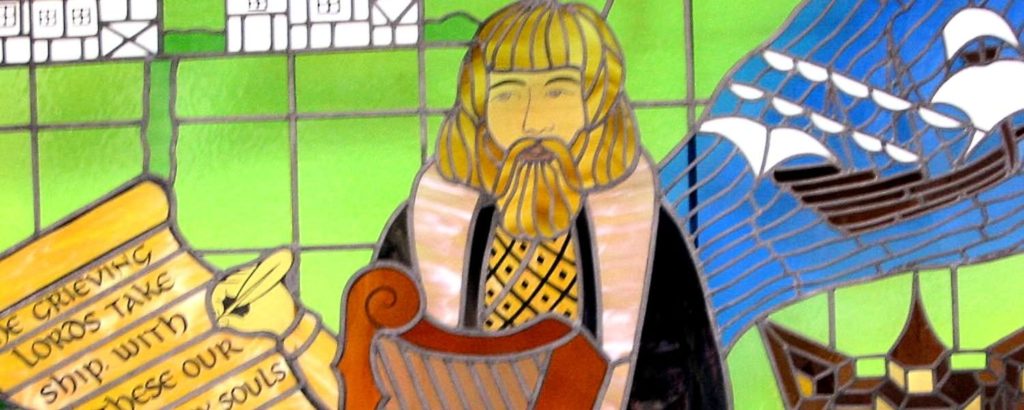
One of the oldest and most important kingdoms of Ancient Europe had originated in the Northern lands of Gaelic Ireland in a place that I would like to call the “New Tyre of the West.” It is from here where we can find the lost Tribe of Dan who is called in the Ancient Irish Annals the “Tuatha-da-Danaans.”
A tribe, people, and place who I believe along with the Tribe of Judah that one day may be credited with helping lay the cornerstone down for the foundation of Ireland and many other countries which spawned shortly thereafter.
The lost history of the Irish Tyranians who I believe is connected to the Biblical “Tribe of Dan” can be found secretly encoded into their long illustrious history, the geography of the region, and the hardships and success they have both endured and earned through countless centuries of fighting for God’s kingdom.
Today, we know of this location of the Irish Tyranians with their tribe the Tuatha-da-Danans in the province of Tyrconnell, also spelled Tirconnell, in the present-day County Donegal. Anciently, I have found that it was also spelled Tyr II, Tyrol, and or Tyrone.
ETYMOLOGY OF TYR-CONN-ELL
Before I delve into this fascinating history, it is important that I first quickly explain the etymology of the name Tyrconnell and also the County Donegal.
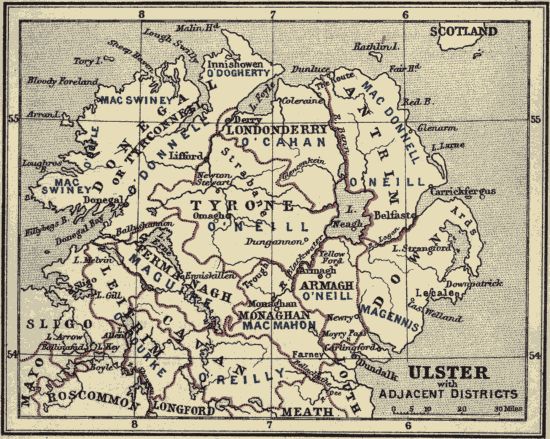
Tyrconnell is a compound word containing the words “Tyr, conn, and ell.”
In a previous article, Tyre-Egypt: God’s Ancient Stone Masons of the Tora, I had went over the etymology of Tyre where I show that it is derived for the old words in many different languages for rock, stone, and or mountain which was anciently called “Tur, Tsur, Tzor, Tor, Tora, Toorah, Tura, Tyr, Tir etc.”
I had also shown that the Phoenician Tyranians were world-traveling Master Masons who were the hereditary descendants of King Hiram in search of the Tyr Limestone. They were also world-famous throughout history to be the best shipbuilders, navigators, and businessmen who had a long tradition of naming their new settlements in a new language that can be proved had spawned from their Phoenician ports and alphabets which they took with them from the East.
After careful analyzation of their history, this proves to me that this was their simple secret formula for not only the birth of successful nation-states but also the legal identification of their landholdings ie: real estate titles.
They seem to follow the same exact Babylonian plan wherever they would venture around the globe as we find in Northern Ireland such as in Donegal County and Ulster where they governed. I would assume that if you are an ancient military and city planner for Tyre that they would both incorporate and honor the necessary ingredients for city planning from their ancestors which included cornerstones brought from their ancestral lands, language, names, laws, religion, and their main method of domination, commerce.
Their main military goal where they traveled was to find and seize all territory along a country’s largest waterways, rivers, and lakes for unlimited freshwater, agriculture and also the safest seaport for travel, commerce, exports, and imports.
In this areal photo of Northern Ireland, we can clearly see that any tribe that ruled from Donegal and Ulster controlled the largest waterways, ports, and from North Coast, they could easily deploy to Scotland and rule these lands with their boats and armies.
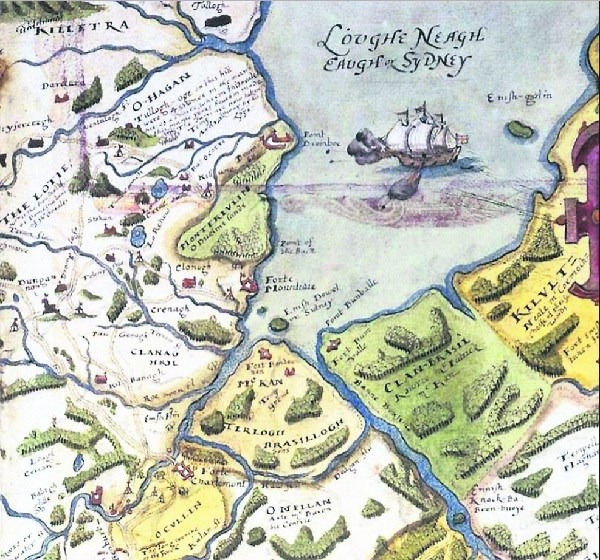
Not surprisingly, it was in these precise locations where they would not only find their prized white limestone (AKA – Tyr, Tir, Tur, Tor) for their immortal Masonic endeavors, but they would also be able to gain control of entire countries and sometimes multiple countries. Once they would become established, they would rule these lands through commerce, laws, religion, myths, and education which they created this system of conquering a native people’s mind, body, and soul which all coincide with one another.
Hence, what worked in Tyre, Egypt and even better in Tyre, Crete would also work wherever they would travel such as this new successful colony in what could be called the third Tyre – Tyrconnell, Ireland. They would also use place names to designate their specific domain (dan-ain), a compound word derived from dan-ain for the Tribe of Dan
This same military methodology that endures the test of time to this very day.
The meaning of the next word in Tyr-conn-ell is ‘conn or con’ which means ‘with’ and is related to the Gaelic ‘comh’ – a prefix denoting “with, com or con.”
Not surprisingly and as I have witnessed as a global fact, these Irish Masonic Builders of Solomon’s Temple from ancient Tyre had added the old name for God onto their name which is the Phoenician and Hebrew El also spelled ul,il, or al and can be variously translated as “God, Lord and or Governor”
With that said, the meaning of Tyrconnell is “Stone-Rock of God or “God’s Stone Masons.”
ETYMOLOGY OF DONEGAL COUNTY
As I mentioned above, the men of Tyre had honored their ancestor’s several ways and I have found that the main method by which they did so was the naming of geographic locations that they controlled like the city of Tyrconnell in their county which they named ‘Donegal.’
In this compound word of Donegal which is composed of the words “don or dan” and the word egal”, we can find the name of the lost Tribe of Dan who is called the “Tuatha-da-Danans” officially encoded into North Irelands ancient history.
The meaning of the Gaelic name Don is also Dan in English was applied to their territory Donegal in order to honor their Tribe of Dan. Since ancient times, the name Dan, Don and or Dom was a title of respect given in Ireland, Scotland, and England to learned or clever men.
For example, in the Lowland Scotch language, a Dominie was a “schoolmaster” and in Latin, a Dominus is a lord, a master and where we get the word dominate, to rule, and dominion, lordship, mastery, rule. Likewise, in Spanish, a Don is a title that is equivalent to “Sir or Master.”
This was the same title of Dom for the original Catholic Benedictine Priesthood which was first only applied to monks, but afterward was extended to persons of all respectable professions.
The next word in Donegal is ‘egal’ which simply means “equal or equal to”.
Therefore, we can say that the territory of Danites was the County Donegal which means the “County or Province Equal to Dan.” I believe this could be in reference to the “Western Branch” in which they being now masters of both Ireland and Scotland were equal in the West to their Eastern Brethren of the Tribe of Dan.
GEOGRAPHICAL SCIENCE SETS THEE WAYMARKS OF DAN
We find that the Tribe of Dan has Set thee waymarks in the places which were named after them meaning Dan’s resting place. This geography corresponds to ancient Irish history which says that in approximately 585, B. C, a ship landed at Ulster, Ireland, which was manned by the “Tuatha-da-Danans” (Tribe of Dan).
According to the annals, amongst their cargo on their voyage to Ireland they were in possession of a large oblong stone in which after their vessel had been temporarily disabled on the coast of Spain, during which the King of Spain attempted to obtain possession of the stone, but the king failed and the guardians of the stone, the Tuatha-da-Danans made it out of Spain to land on the beautiful coast of Northern Ireland.
In Ptolemy’s map of Ireland, we find Dan’s- Lough, Dan-Sowar, Dan-Sobairse, Dan’s resting place, and Dan’s habitation, and Dan-gan Castle (the birth-place of the Duke of Wellington).
Irish Historian, Thomas Moore had written that the Tuatha de Danaan (Tribe of Dana), “after sojourning for some time in Greece… proceeded from thence to Denmark and Norway”.
Author Geoffrey Keating (ca.1570 1646)had said that the Danaans were a people of great learning and wealth; they left Greece after a battle with the Assyrians and went to Ireland; and also to Danmark, and called it “DAN-mares”, “Dan’s country.”
According to The Essential Teachings of Herbert W. Armstrong, the Tribe of Dan left their serpent waymarks at “Danslaugh,” “Dansower,” “Dundalke,” “Dundrum,” “Donegal Bay,” “Donegal City,” “Dunglow,” “Londonderry,” and ” Dingle,”
THE IRISH OLLAMS SAME AS SONS OF ULAM ALL OVER THE WORLD
It was said in the Irish Annals that among the passengers of the Danans was a princess of remarkable beauty named Tephi who was accompanied by her guardian, afterward known by the name Ollam Fola. In my previous article, I explain that King Ollamh (Ollam) Fodhla was known as the great lawgiver and patron of learning to early Ireland.
To this day in Ireland as it did then, an ollam or ollamh means “a doctor, professor and or scholar of any kind of learning.” In other countries around the world such as in the Islamic nation, these learned me are known as the Ulam of Mulah.
King Ollam is mentioned in the “Annals of the Four Masters,” p. 412, as a sage and law-giver. He was said to have founded a College of Ollams at Tara, or a ‘School of the Prophets.” There was actually a famous college at Tara called the Mur Ollam han, or the House of the Learned. Four Masters, p. 293.
“Besides all these reforms the great legislator founded a University at Tara, which, for rank and dignity, preceded all others of the kingdom, and which he called MurOllam-han, or the College of Doctors (vide O Halloran, Book iv., chap. 1, p. 132), which, since we have discovered the word to mean “Revealers,” would stand for the School of Revealers.
Ollam Fola ordered the sacred records to be kept at Tara. “These form the basis of ancient Irish history.” (Annals of the Four Masters, note p. 297.) Ollam Fola was called the “Chroni. cle’” (vide Moore, i, 114.)
The name we find in Ancient Irish history as Ollamh (Ollam) we can also connect Biblically to the Sons of Ulam who Bedan, meaning Son of Dan can also align to ancient Irish history.
Another passenger on the boat mentioned in the Irish annals that were associated with Tuatha-da-Danans was a man named Simon Baruch who we can identify as part of the global Sons of Ulam or in Gaelic – Ollamh (Ollam) who have been tasked to bring this knowledge to the world.
This man Simon I will discuss in a future article in which I will detail the fascinating history of the Irish Sons of Ulam of whom I believe one of the most famous is Saint Columba or Co-ulum-ba who was once a Supreme Ulam of Ireland.
THE TYRE MASONS OF TARA IRELAND
We learn that from Irish mythology that when the Tuatha-da-Danans landed in Ireland, they were newcomers and there was already a ruling king whose castle in Meath, was changed from Lothair Grofinn to Tara.
It is said that Princess Tephi upon her death was buried here in a sepulcher that is covered by a mound of earth 60 feet square whose remains are intact to this day and is called “Tara or The Hill of Tara.”
The Hill of Tara is an ancient ceremonial and burial site near Skryne in County Meath, Ireland. According to ancient tradition, it was the inauguration place and seat of the High Kings of Ireland.
Here is an ancient depiction of the topography of this area.
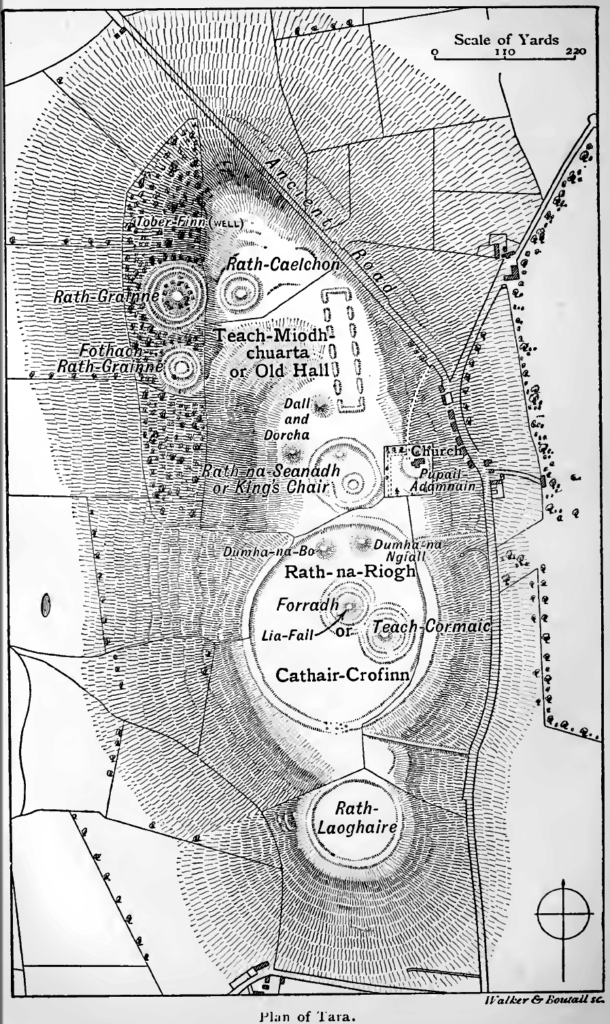
It is here in Tara, where you will discover the ancient remnants of the Masons of the Tyranian Irish who left numerous limestone monuments and earthworks — including burial mounds, round enclosures, the “Mound of the Hostages”, and a standing stone that some believe to be the “Stone of Destiny” (Lia Fáil).
There is also a church and graveyard on the hill.
Modern-day Tara is part of a larger ancient landscape and Tara itself is a protected national monument under the care of The Office of Public Works, an agency of the Irish Government.
To reiterate from past research, the name Tara comes from the words “tor, tur, tyr, tir, tora, torah, tura etc.” which all mean “stone or rock and later also to mean “mountain, chief, Lord, God, and or prince for their descendants.”
I believe these precise locations were known well over 2,000 years ago and were shown on Ptolemy’s ancient map of Ireland.
In Isa. 66-19 we read, and I will set a sign among them, and I will send those that escaped of them unto the nations, etc., to Tarshish and the Isles afar off. On an Ancient map of Ptolemy’s, England and Scotland are named Javan, and Spain, Portugal, and France are frequently mentioned as Tarshish, the ships of Tarshish, etc.
Ulam’s son, Bedan whose history and name we can bridge with the Tuatha-da-Danans and their Irish High King Baedan which means “Son of Dan” (King Tech- Baoithin, Baithen, Baithin, Baithan, Baetin, Baitan Mor, Báetán mac Muirchertaig, “Baithen the Great”.)
This King Baedan became the father of the senior line of the Hy-Niall kings (King of Ireland and Scotland) because he was the great-grandson of Niall of the Hostages and his grandmother was Scottish Princess of Dalriada named Erca which united the two ancient kingdoms of Scotland and Ireland into one.
The Pictish Chronicles informs us that they were from Ollamhan, whence comes Mur Ollamhan at Tara, to Fiacha, son of Baedan,” who fettered the hostages of Erin and Alba. Also, seven kings of the Alban Cruithnech governed Erin (Ireland and Scotland) at Tara.
For example, Of this king’s descendants, we see the name Olma encoded into their sirnames such as his son Colmán Rímid and Maeluma.
KING MILESIUS OF IRELAND THE SAME AS KING MILESIUS OF CRETE
As I mentioned above, in the tradition of honoring their mariner ancestors, they would rename these new lands they had conquered and even the characters in their myths and also importing the very language, laws, and history in the very boats that carried them.
This is where we meet with more of their ancient mythology encoded into the Irish Annals, which include volumes called the Annals of Ulster, the Annals of the Four Masters, etc.
A major clue to the original homeland of these people comes from the old Irish folklore which states that they arrived in Ireland with an expeditionary force from anywhere between the 17th to the 6th centuries B.C. They are said to have spawned from the fifth son of King Milesius who was the progenitor of the Milesian race and hereditary Father to some of the earliest tribes of Ireland and the noble families of Ulster.
This story of King Milesius in Ireland coincides exactly with the mythology of their homeland which I believe was both in old Tyre (Tora, Tura) Egypt and in new Tyre on the Holy Island of Crete.
The ancient homelands of their ancestors.
In researching the most remote mythology on this King Milesius, we will discover that the oldest reference takes us directly to the ancient mythology of Crete where we find it was King Melissus who first introduced sacrifice to the Gods, and introduced new rights and sacred ceremonies on this island.
He had two daughters Amalthea and Melissa, which nursed the child Jupiter, and fed him with goat’s milk and honey. Melisseus was the eldest and leader of the nine Curetes (Kuretes) of Crete. The meaning of the name Melisseus is “bee-man,”and another form of Melissus, in Cretan means, “honey-man.”
CURETES & CABIRI OF CRETE SAME AS CABIRI & DRUIDS OF IRELAND
According to Diodorus Siculus, the Curetes lived in the time of Rhea; The Father of History, Herodotus and Strabo writing later both had said that the Curetes were originally Phoenicians who accompanied Cadmus out of Phoenicia.
The ancient Curetes (Kuretes) of Crete I have written extensively about these various connections in history with the Priesthood of Zeus who were also known by many other names such as the Telchnines (Telknines, Telkhis, Telegonus, or Greek, Τελχῖνες), Corybantes, Dactyls, and Cabiri.
These same Priesthoods with their same history and myths bring us to another connection to Ancient Ireland that would be hard to refute which is through the history of a well-known but mysterious Priesthood called the Druids.
For example, both the Cretans and Egyptians had a priesthood that was called the Cabiri and so did the ancient Irish.
In a previous article, The Irish Druid Cabiri Are the Same As the Phoenician Cabiri, I explained that you will find that the Latin name Cabiri and Old Irish Cabur is derived from the Phoenician Hebrew word Kabir that is sometimes spelled Cabir, Chabir, Chabiru, and Chabireh. Cabur was once of the ancient God of Ireland being that of the ancient Irish pantheon of Gods known as Axire, Axcearas, Coismaol, and Cabur.
The priests of this God were called the Druid Caburi or Cabiri.
According to the ancient Phoenician historian, Sanchoniatho, the mysteries of the Cabiri were first celebrated by the Phoenicians, and introduced into Greece. He had written that first or original Cabiri were the eight Sons of Sydyc, who was a Canaanite.
They lived in the Days of Taaut of Thoth who is the same as the Phoenician Hermes. Pausanias, the Greek historian and geographer who lived in the time of his cousin, the Roman Emperor Hadrian, relates, that the Mother of the Gods was anciently worshiped at Thebes with the Cabiri, whose Names and Mysteries he durst not divulge.
THE FALL OF THE IRISH TYRE
The kingdom of Tyrconnell represented the core homeland of the Tribe of Dan who became known in the Irish Annals as the Tuatha-da-Danans with various families and subunits of families whose the most successful under the banners of the Ulaid, Northern Uí Néill, Niall of the Nine Hostages, and Ulster all vying for power.
The chief seat of the ancient royal Irish families was sacked and ceased several times by English forces in their attempts to reduce the country to obedience to the royal authority. However, the warrior spirit of the Irish branches of the Tuatha-da-Danans proved to be a formidable fight to the invading English until the close of the reign of Elizabeth, when it would become the location of fighting during what was called Tyrone’s Rebellion at the end of the 15th Century.
It was said to be burned by Hugh O’Neill, earl of Tyrone, to prevent its falling into the hands of the queen’s forces in Ireland.
Their power continued to exist until the 17th century when before the English invaded their lands, the ancient native rulers of Ireland fled to the North and abroad in the episode known as the Flight of the Earls. It was then finally incorporated into the English-ruled Kingdom of Ireland.
But, as with all the major Irish kingships, the line of hereditary descent continues into the present day.
LEGAL BANNERS FOR THE WARRIORS OF GOD AND THE KING
In researching the Ancient History of Ireland, you will find that it was here that the first laws and legal system of the Western World was developed in the reign of Ollamh Fodhla who I have mentioned were the learned men who ruled over their people. This legal system was known as the Brehon Law which operated late into the 17th century and was abolished and later became the English common law system. After the English had conquered these lands in the time of Elizabeth I, the Brehon laws were considered to be old, lewd, and unreasonable.
However, one of the most important legal ordinances of Brehon Law was for Tribal Heraldry where their tribal insignias bearing various symbols and colors would identify their rank. It is my understanding that before this time in the West, tribal and royal heraldry was not governed by a legal assembly such as the Ollamh Fodhla.
The various Celtic Tribes who jostled for control of Ireland were distinguished by particular symbols and colors each class of society was to wear in their clothes were specially regulated by Brehon Law.
Servants wore clothes with one color and one step up was a rent-paying farmer who wore two colors. Military officers wore three colors and their chiefs wore five colors. The highest members of society being the ollamhs and poets wore six colors in the clothes and seven colors in the clothes of kings and queens.
This system of royal authority was left to the family and tribe to be in charge of their own heraldry and royal rankings which would leave this legal loophole open to corruption and fraud. In researching the royal families of the world and priesthood over the last 2,500 years, I would say with confidence that this fraud has most likely happened quite often. Especially under the English Common Law System.
The Rev. Geoffrey Keating, in his “General History of Ireland,” explains that in the reign of Ollamh Fodhla, in a “great triennial assembly at Tara, it was ordained by a law that every nobleman and great officer should, by the learned heralds, have a particular coat-of-arms assigned to him according to his merit and his quality, whereby he should be distinguished from others of the same rank, and be known wherever he appeared.”
An ancient historical account of the battle of “Magh Rath,” that was compiled from ancient manuscripts of Finn Mac Gorman, Bishop of Kildare and later transcribed by John O’Donovan from the Book of Leinster shows us exactly the names, symbols, and colors of some of these families.
Finn Mac Gorman was Bishop of Kildare in the first half of the twelfth century and died in the year 1160. Here is Mac Gorman account of the various Tribal Banners which was published in 1842 by the Irish Archaeological Society (p. 227, see also p. 847):—
“Mightily advance the battalions of Congal
To us over the ford of Ornamh;
When they came to the contest of the men
They require not to be harangued.
The token of the great warrior of Macha—
Variegated satin on warlike poles;
The banner of each bright king with prosperity
Over his own head conspicuously displayed.
The banner of Scannlan—an ornament with prosperity,
And of Fiachna Mor, the son of Baedan,
Great symbol of plunder floating from its staff
Is over the head of Congal advancing towards us.
A yellow Lion on green satin,
The insignia of the Craebh Ruadh,
Such as the noble Conchobar bore,
Is now held up by Congal.
The standards of the sons of Eochaidh
In front of the embattled hosts,
Are dun-coloured standards like fire.
Over the well-shaped spear-handles of Crumthann.
The standard of the vigorous king of Britain,
Conan Rod, the royal soldier,
Streaked satin, blue and white,
In folds displayed.”
IRISH TYRE AND THE TRIBE OF DAN FROM IRELAND CONCLUSION
To some people of modernity, this history seems nothing but a mythological fairytale and or legend of days gone by. But to others like me, it is a beautiful homage to the true history of our people and the world in this 6th Age encoded into our Holy Scriptures, nation myths and the laws of our lands of which we are in the year 2019.
The facts of hiostory are well known that the Irish tradition tells us that they are a fighting race, and as it were, “mariners” (Ezek. xxvii. 8) or seafaring men. They have hung their shields on the walls of Tyre (Ezek. xxvii. 10), and being insular, they have been vindicated by true history and their character as the Warriors for God via the Tribe of Dan.
Let it be said that legend informs us that the Tribe of Dan had also brought with them the famous Stone of Destiny, and is also known as the Stone of Scone and The Coronation Stone (Liagh Fail) on which all succeeding kings of that race were crowned. It was used for centuries in the coronation of the monarchs of Scotland, and later the monarchs of England and the Kingdom of Great Britain.
Historically, the artifact was kept at the now-ruined Scone Abbey in Scone, near Perth, Scotland. It is also known as Jacob’s Pillow Stone and the Tanist Stone, and in Scottish Gaelic, clach-na-cinneamhain.
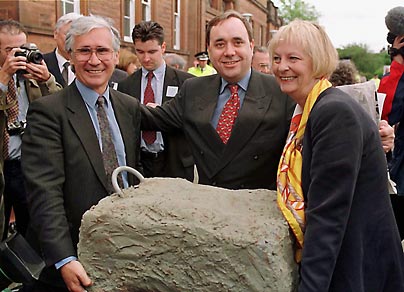
Fergus the Great borrowed the Liagh Fail to be crowned on, after his invasion of North Britain; and, being deposited in the abbey of Scone, it continued there until the reign of Edward I., who had it conveyed to Westminster Abbey, where it is now placed beneath the inauguration chair, having its name changed for that of ‘Jacob’s stone.’
Its value appears to rest upon the destiny contained in a very ancient Scythian or Irish verse, the purport of which is, ‘that where the Stone of Destiny is preserved, there a prince of the Irish race should govern.’
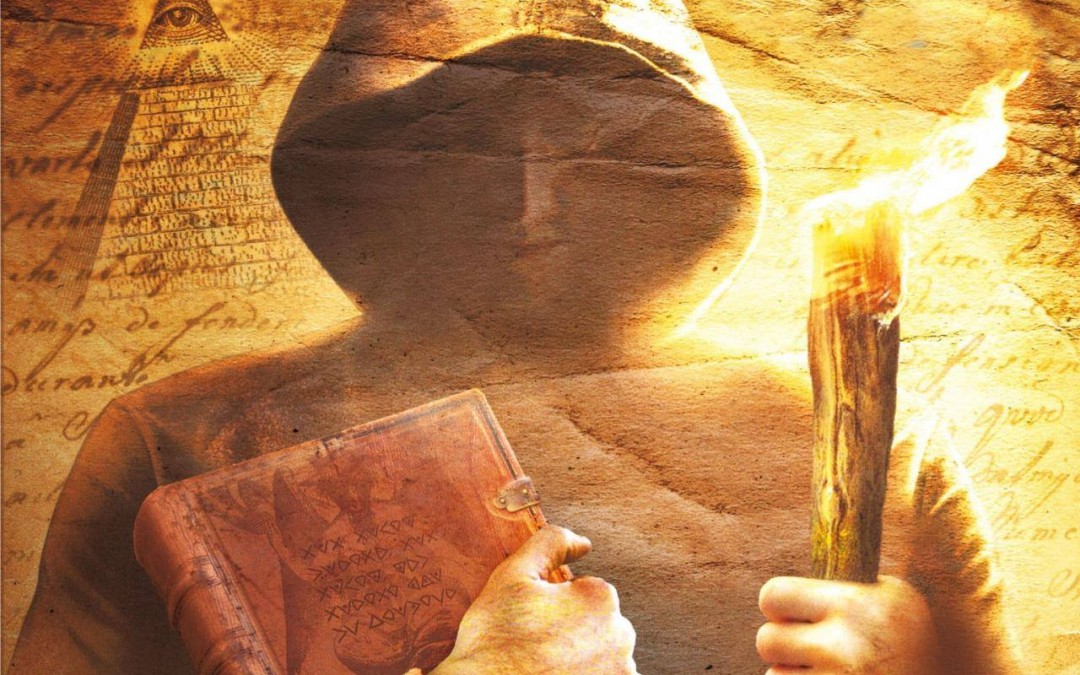
by Moe | Sep 29, 2019 | History of the Brotherhood, Latest Media
In the Scripture, we learn that the ancient warriors for the Lord can trace their knowledge (Gnosis) to Ulam (Olam, Elam, Elyma, Elymai) who is listed as a descendant of Machir of the tribe of Manasseh.
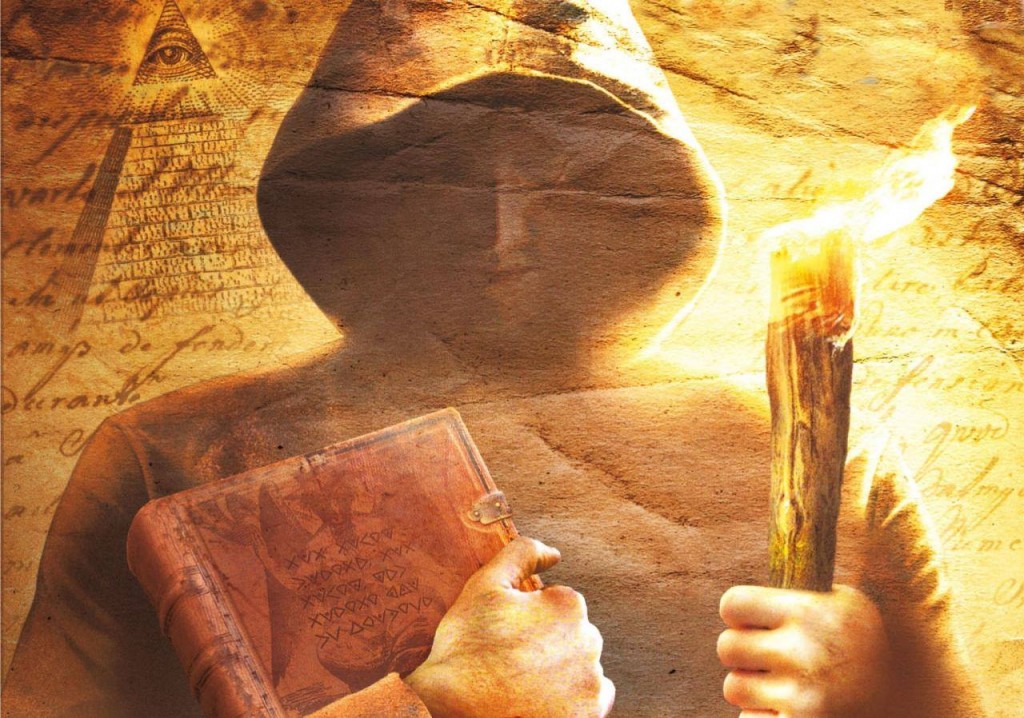
The genealogy of the Tribe of Machir tells us in 1 Chronicles 7:16 – “Maacah the wife of Machir bore a son, and she named him Peresh; and the name of his brother was Sheresh; and his sons were Ulam and Rakem.”
Ulam is listed as the father of Bedan in the Gileadite posterity of Manasseh (1 Chron, vi, 16, 17); and the first-born of Eshek of Benjamin who was among the descendants of King Saul, and the ancestor of one hundred and fifty valiant archers (1 Chron. viii, 39.40).
Hence, the sons of Ulam were men who were mighty warriors, bowmen, having many sons and grandsons who created the “Tribe of Benjamin (Benjaminites).”
The Ancient Sages interpreted the name Bedan as “Ben-Dan” which means the son of Dan and others have identified him with the judge of Revelation known variously as “Abadon, Abidan, Abdon, Adon and or just Bedan.”
For example, in Judaism, the term “Adon Olam” means the “Master of the World,” and is used as one of the names of the “God of this World” who differs from the God on Most High, Yahweh or Jehova.
Since we know Bedan was called a “Son of Dan,” then it makes perfect sense that his father who is named Ulam was also named Dan for he would have to be for his son to be named Bedan.
These names I contend are given in the Scripture as holy sir name or appellation to signify both their rank in the heavenly hierarchy and also concealing their ancient secular (sec-ulum) history from the profane which can be reconciled with etymology, history, and now science (geography, archaeology, and DNA).
With that said, Ulam who was also known as Dan and his sons were the Tribe of Dan in which Bedan was the last and Bedan’s sons became who “were men who were mighty warriors, bowmen, having many sons and grandsons – the “Tribe of Benjamin (Benjaminites).”
However, what they have done is encoded their Holy names into the history books, myths and even geography of our world into just about every known civilized government all over the globe. Whether it be their given holy name or name of their tribe, they left their marks everywhere.
Meaning, my research proves that you will find that the Sons of Ulam and Bedan have most likely played the largest role as the builders of the world we see today in the 6th Age where you will clearly see that their names are connected to the most famous and industrial cities and also to some of the most intelligent (knowledgeable) who have ever lived.
In this article and future pieces, I will attempt to put forth some of this fascinating research documenting this hidden but revealable history of the Sons of Ulam and Bedan.
Please keep in mind as you read this that “It was the tribe of Dan that left the serpent’s trail,” and in following Jeremiah’s instruction to “Set thee up waymarks”.
What I would like to first bring to your attention is the meaning of Ulam as I did with Bedan which means “Son of Dan.”
THE MEANING OF ULAM
The name ‘Ulam or Olam’ is a compound word composed of the words ul (ol, el,il,al) and am (om, on, me).
The meaning of ul (el,il,al) is variously translated as “God, Lord and or Governor” and ‘am’ means “to exist, be alive, having the state, quality, identity, nature, role and or occupy a position in space.”
Therefore, Biblically speaking, we may refer to the Sons of Ulam to have been appointed to their roles and positions by a “God, Lord, King and or Governor.”
In Arabic, Alima (Arabic اليمه) or Ulama means “knowledgeable, wise, and or scholar and today in Islam, the Ulama are placed in charge of all religious, legal, and historical governmental affairs for the kings of the East in their respective countries.
ULAM BECOMES OLAM IN THE OLD TESTAMENT (TORAH, TUR’AH)
The world Ulam is also rendered Olam (Alam) in the Old Testament as a word when used in reference to the Levite priesthood as servants to God and the king in which Olam becomes to mean “eternal (e-tur-nal) or eternity (e-tur-ni-ty).”
My readers who have been following my latest articles will notice that in the word eternal (e-tur-nal) or eternity (e-tur-ni-ty) we have the ancient word tur (ter, tir, tyr) which means “rock, stone or Peter”.
Olam can be found in the Torah, In Psalm xc. 2 we read, “From olam to olam thou art Elohim.” Olam : hidden, veiled, gives Alam: a virgin, one veiled. Jonah was in sheol for olam as he lost count of time, it was veiled from him.
Other Examples of Olam in Judaism;
“Mighty men from olam.” in reference to David’s Mighty Warriors who are a group of 37 men in the Hebrew Bible who fought with King David and are identified in 2 Samuel 23:8–38.
Exod. xxi. 6. “Serve him for olam;” xl. 15. “Priesthood of olam.”
Jer. xxviii. 8. “The prophets that have been before me and before thee from the olam.”
Dan. ii. 20. “Blessed be the name of God from the olam and unto the olam.”
Job vii. 16. “I would not live to olam;” xli. 4. “Wilt thou take him (leviathan) for a servant for olam.”
Generations of olam, The covenant of olam, God of olam, Hills of olam.”
GLOBAL ULAMS BY NAME
MODERN NAMES
In Judaism “Ulam or Olam”
In Ireland “Ollamh”
In England “Barron of Verulam (Ver-Ulam)”
In Islam “Ulama”
In Iran “Mullah”
ANCIENT NAMES
In Persia “Elymaei and Bathina”.
In Media “Elymais and Batana”.
In Arabia “Elamitae and Pudna”.
In Syria “Elemais and Batnaa”.
In Macedonia “Elyinea and Pytna”.
In Sicily “Elymii and Pittineo”.
GLOBAL CITIES AND THE SONS OF ULAM
All over the world, the Sons of Ulam (Dan) left a serpent’s trail in order to set thee up waymarks.
With that said, I believe that their were two factions of this Tribe in which one side of the Brotherhood travelled West and the other stayed in their Eastern homelands.
The Western branch had purposely went into the ways of the world of commerce and even paganism and became what we can call today “Secular” which is derived from the Latin word ‘sec-ulum.’
It is in this word ‘sec-ulum’ where you see the Ulam chiefly through the influence of the Latin Versions of the Bible, wherein seculum is always used as equivalent to “the way of the world. (in Tacitus, Germ. 9,—’ Nee corrumpere et corrumpi ‘seculum vocatur,’ for “the way of the world.”)
To this we owe the use of the word “secular (secolo, secolare, siecle, seculier) in such phrases as the “Secular Clergy ;” i. e. those who were engaged actively in the world, as opposed to the ” Regulars,” those who lived sub regula, “under rule,” in Monasteries.
Hence, “And also after that, when the sons of God came in wnto the daughters of men, and they bare children to them; the same were the men that were of old, the men of renown.”
Jerome translates it thus – “Isti sunt potentes a seculo (these are mighty men from the beginning).”
You can see both these differences and similarities I mention simply above in the priesthoods today with the Western Roman Catholic Church and governments and the Eastern Orthodox Church and their governments.
As part of my ongoing research into this history, I would like to list some of the synchronicities and revelations between the two Brotherhoods.
Unfortunately, I cannot document the complete histories in this space but will devote some time to each Ulam in their perspective country as time permits.
SONS OF ULAM IN THE EAST
Ulam and his sons had created a city that Eusebius had said, in ‘Ovaxugo, that there is a village called Ulamma (Ulamais, Ulam-luish, Ulam Luz, Elymais, Elemais) twelve miles from Diocaesarea, east.
Not surprisingly, the Septuagint lists the ancient name of the city of Dan as Ulamais which confirms the history passed down by Eusebius and is translated to Laish (Judg. xviii. 29).
The name of Ulam-Luz is said in the Septuagint to have also taken this for the ancient name of Bethel.
THE ULAMS OF THE WEST
As part of my ongoing research into the history of the Sons of Ulam of the West, I would like to list some of the synchronicities and revelations that seem to first appear in Western literature in the history of Ireland and then moving into Scotland, England, Brittain, Gaul or France, Russia and other countries.
THE OLLAMH OF IRELAND
The Sons of Ulam can be found in the Early Irish Annals where they immortalize themselves into the legendary history of the first people of Ireland called “Tuatha de Danaans’, meaning “The tribe of Dan’ with King Ollamh (Ollam) Fodhla who was the great lawgiver and patron of learning to Ireland.
An ollam or ollamh in both early Irish literature and event today is a member of the highest rank of filí and came to mean a doctor, professor and or scholar of any kind of learning.
This family, the Sons of Ulam were some of the most learned people in all the world by virtue of their Eastern ancestors of whom they have been charged with carrying these teachings into the West such as in the formations of Early Ireland where they have left their literature and Mason Marks as scientific proof of this true history.
It was said that originally the Ollamh was appointed by the king but by the 6th century A.D. it had become an elected post which was voted for by the other ollamhs.
The Ollamhs led by the Ollamh Érenn or Chief Ollam of Ireland became the most powerful institution and person in the land whose social status was equal to the High King of Ireland. The head Ollamh of a province such as Ulster would have been the head of all the ollams in that province and would have been an equal status to the king as (Ollamh Érenn) .
The Ollamh Érenn had his own palace and a large group of other learned and elected ollamhs said to total approximately 30-33 Ollamh with their servants.
The ancient name for the northern province of Ireland was Uladh (Uluidh) (pronounced Ulla) now called Ulster. The name Uladh is said to have taken its name from Fothadh Airgtheach, the king of Ireland in 285 AD. who was killed at the battle of Ollarba (Larne Water) in County Antrim, where his “uluidh” was erected. This place was named after him and became a place of pilgrimage.
We see the Sons of Dan in Ireland can also be found with King Baedan (Son of Dan) who was the grandson of Muiredhach, who was grandson of Niall of the Hostages; and his grandmother was Erca, the beautiful daughter of Loarn, a prince of Scottish Dalriada; and through this union he became the father of the senior line of the Hy-Niall kings.
Medieval Ulster genealogists describe him as rí Érenn ocus Alban (king of Ireland and Scotland) until his murder in approximately the year 520-533 AD. You will find various spellings of his name Bedan such as King Tech- Baoithin, Baithen, Baithin, Baithan, Baetin, Baitan Mor (“Baithen the Great”).
The official Ollamhs of Ireland held significant power until around the 15th-16th centuries.
THE ULAM OF ENGLAND AND BRITTAIN
One of the most famous Ulams of the West is known as Saint Alban (Albinus) who is known as England’s first Martyr in which the Anglo-Saxon Chronicle places as the year 283 and Saint Bede listed the date in 305 where he adds, “when the cruel Emperors first published their edicts against the Christians.
The name of the town in Roman Britain where Alban was murdered is called “Verulamium”.
The British author Gildas refers to the fifth-century martyr as “Saint Alban Verolamiensis,’of Verulamium’ in a passage that refers to the “graves and places where they suffered” of the early British martyrs.
Gildas gives us a brief historical account of what he describes the persecution of Christians in Britain,which he identifies as part of the persecution of Diocletian, adding at the end of a passage about “their graves and the places where they suffered:
“I refer to Saint Alban of Verulam (Verolamiensem), Aaron and Iulius, citizens of Caerleon (Legionum Urbis) and others of both sexes, who in different places, displayed the highest spirit in the battle-line of Christ”. (De Excidio 10)[32]
The town of Verulamium is mentioned in an ancient wax tablet inscription written in Latin discovered in London during the Bloomberg excavations that were dated in approximately 62 AD. The tablet reads:
P(ublio) Mario Ce<lso=XIII> L(ucio) Afinio Gallo co(n)s(ulibus) XII Kal(endas) Nove//mbr(es) M(arcus) Renn[iu]s Venusrus me condux{s}isse a C(aio) Valerio Proculo ut intra Idus Novembres perferret a [[Londi]] Verulamio penoris onera viginti in singula |(denarii) quadrans vecturae ea condicione ut per me mora |(assem) I Londinium quod si ulnam om[n]e[m]
It is in this compound name Ver-ulam-ium where we can clearly see that this town is where the Ulam had presided.
The word ‘ver’ means “to spring, or belonging too and truth.” The suffix ‘ium’ at the end of the word is for “nouns that have been adopted into the English language that are unchanged from Latin and also representing a region of the body or a biological structure.” I will explain the meaning of Ulam below.
After Saint Albans death, the early Church dedicated a cult to his memory that was established upon a hilltop located outside Verulamium.
The next Western Ulam worth mentioning is the English philosopher and statesman Sir Francis Bacon who took the titles of “Baron of Verulam (Ver-Ulam) and Viscount of St. Albans.”
We can say that Sir Bacon was the “Supreme Ulam for England” where he served both as Attorney General and as Lord Chancellor of England and his genius as a philosopher, alchemist, cabalist, and Rosicrucian helped him develop the very scientific methods that remained influential through the scientific revolution.
THE BAVARIAN ULMA
In Bavaria, Germany is the city of Ulma or Hulma, called by the French, Oulme.
It was known more anciently Alcimoennis in the province of Swabia (Schuaben) on the Danube River (River of Dan) first mentioned in a document of 854 AD as the royal palace-fortress of “Ulma”.
It was considered one of Europe’s most important medieval cities with an exceptional cathedral and scenery along the Danube.
Hulma was given a municipal charter from Holy Roman Emperor Frederick I (Barbarossa) and the city was surrounded by a massive wall around the year 1000 AD until Henry the Proud of Bavaria burned it down in 1134.
Lewis of Bavaria made it a Free City. It had embraced the Reformation in the year 1529.
One of the most famous of the modern Ulma who hails from Hulma, Germany is Albert Einstein.
THE RUSSIAN ULMA
The Samara government of South Russia was divided into seven districts, the chief towns of which are Samara, Bugulma, Buguruslan, Buzuluk, Nikolaycvsk, Novo-Uzcn and Stavropol. In the name, Bugulma you can see the Ulma and also Samara can be connected to Samaria.
In the history of Samara from the time of Catherine II, some German colonists, from Wiirttemberg and Baden were invited into her court.
Today Bugulma (Russian: Бугульма; Tatar: Бөгелмә) is a town in the Republic of Tatarstan, Russia. Population: 89,204 (2010 Census); 93,014 (2002 Census); 89,589
THE ULAMS OF GENGHIS KAHN
After the Mongol (Tartars) conquests led by Genghis Khan, it was said that the Khans were influenced by the Ulama or who were institutional Sufis who were their country’s scholars and legal administrators. From this point forward, rarely do political and or other people are documented in their history where the Ulama now plays the central role.
As the Ulama serve the King, it is not surprising that they must answer to the Turkish sultans to this very day.
IRANIAN ULAMS
In Iran the Ulam are called Mullahs who are called today “autonomous theologians and jurists, who claim authority in all civil and religious questions.” The Mullahs
are charged with the interpretation of the Qur’an and the hadiths in developing Islamic law and cultivating the Arab language.
ULAMS OF MOHAMMED
Mohammedans are said to invoke the intercession of the prophet and the worthies of the early days of Ulam.
We find the word Ulam in Islam today variously translated as Ulama (Ulema, Alim) to mean in Arabic as the “knowledgeable ones, the learned ones, and or scholar” who are held in their prospective countries as the guardians, transmitters, and interpreters of religious knowledge, Islamic doctrine, and law.
The Islamic State considers the Ulama are not restricted to be knowledgeable of the state’s religious affairs, but also other experts in their respective trades whether it be in fields such as politics, science, commerce, education and more.
In Islam, all knowledge is divine and God-given.
In the early 1800s, with the support of the Egyptian Ulama, Muhammad Ali came to power and at Sultan Mahmud H’s request, suppressed the Cretan revolt in 1822.



















